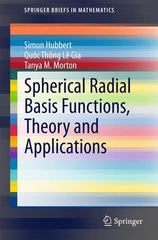Answered step by step
Verified Expert Solution
Question
1 Approved Answer
PLEASE WRITE CLEARLY AND EXPLAIN EVERY DETAIL TO EACH STEP PRECISELY PLEASE FOR BOTH QUESTIONS PLEASE DON'T SKIP ANY DETAILS. QUESTION 1 Suppose that the
PLEASE WRITE CLEARLY AND EXPLAIN EVERY DETAIL TO EACH STEP PRECISELY PLEASE FOR BOTH QUESTIONS PLEASE DON'T SKIP ANY DETAILS.
QUESTION 1
Suppose that the number of hours of daylight on a given day in Seattle is modeled by the function 3.75cos(/6)+12.25, with t given in months and t=0 corresponding to the winter solstice.
- What is the average number of daylight hours in a year?
- At which times t1 and t2, where 0 t1< t2 < 12, do the number of daylight hours equal the average number?
- Write an integral that expresses the total number of daylight hours in Seattle between t1 and t2.
- Compute the mean hours of daylight in Seattle between t1 and t2 here 0 t1< t2 < 12, and then between t2 and t1 and show that the average of the two is equal to the average day length.
QUESTION 2
As implied earlier, according to Kepler's laws, Earth's orbit is an ellipse with the Sun at one focus. The perihelion for Earth's orbit around the Sun is 147,098,290 km and the aphelion is 152,098,232 km.
- By placing the major axis along the x-axis, find the average distance from Earth to the Sun.
- The classic definition of an astronomical unit (AU) is the distance from Earth to the Sun, and its value was computed as the average of the perihelion and aphelion distances. Is this definition justified?
Step by Step Solution
There are 3 Steps involved in it
Step: 1

Get Instant Access to Expert-Tailored Solutions
See step-by-step solutions with expert insights and AI powered tools for academic success
Step: 2

Step: 3

Ace Your Homework with AI
Get the answers you need in no time with our AI-driven, step-by-step assistance
Get Started


